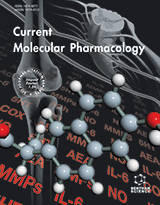Abstract
Background: Malignant gliomas constitute a complex disease phenotype that demands optimum decision-making. Despite being the most common type of primary brain tumors, gliomas are highly heterogeneous when their pathophysiology and response to treatment are considered. Such inter-individual variability also renders differential and early diagnosis extremely difficult. Recent evidence highlight that the gene-environment interplay becomes of fundamental importance in oncogenesis and progression of gliomas.
Objective: To unmask key features of the gliomas disease phenotype and map the inter-individual variability of patients, we explore genotype-to-phenotype associations. Emphasis is put on microRNAs as they regulate gene expression, have been implicated in the pathogenesis of gliomas and may serve as theranostics, empowering non-invasive strategies (circulating free or in exosomes).
Methods: We mined text and omic datasets (as of 2019) and conducted a mixed-method content analysis. A novel framework was developed to meet the aims of our analysis, interrogating data in terms of content and context. We relied on literature data from PubMed/Medline and Scopus, as they are considered the largest abstract and citation databases of peer-reviewed literature. To avoid selection biases, both publicly available and private texts have been assessed. Both percent agreement and Cohen’s kappa statistic have been calculated to avoid biases by SAS® macro MAGREE with multicategorical ratings.
Results: Gliomas serve as a paradigm for multifaceted datasets, despite data sparsity and scarcity. miRNAs and miRNA-based therapeutics are ready for prime time. Exosomal miRNAs empower non-invasive strategies, surpassing circulating free miRNAs, when accuracy and precision are considered.
Conclusion: miRNAs hold promise as theranostics.
Keywords: Theranostics, biomarkers, multi-omics, microRNAs, exosomes, precision oncology.
Graphical Abstract





























